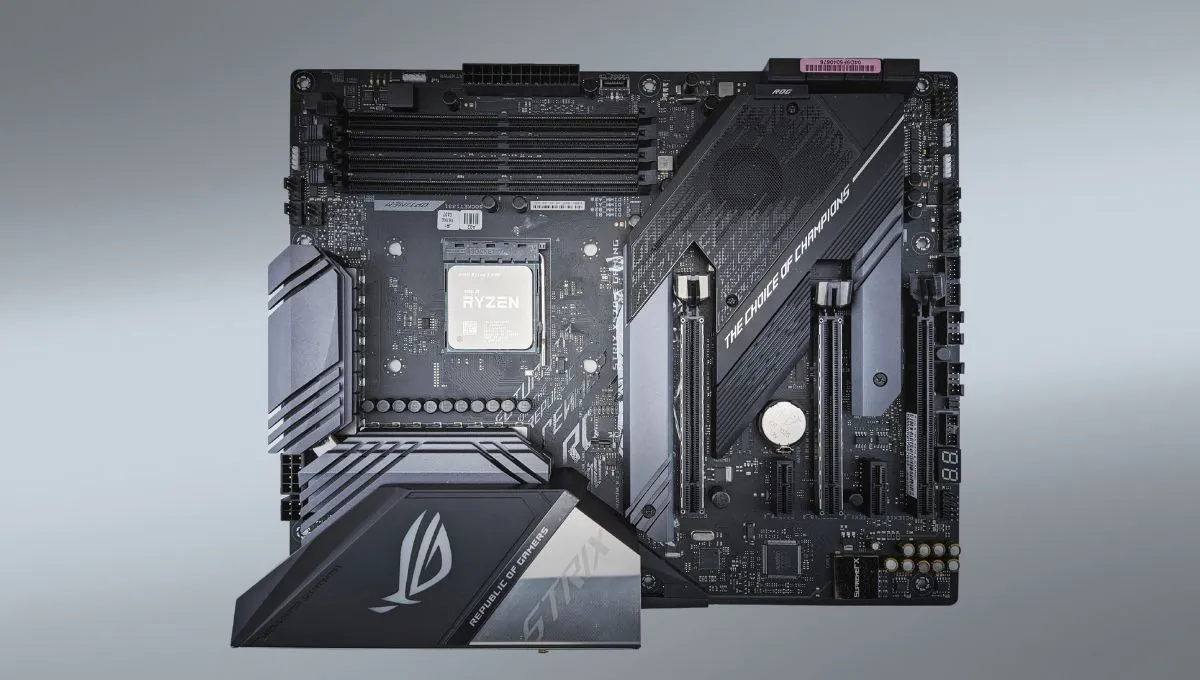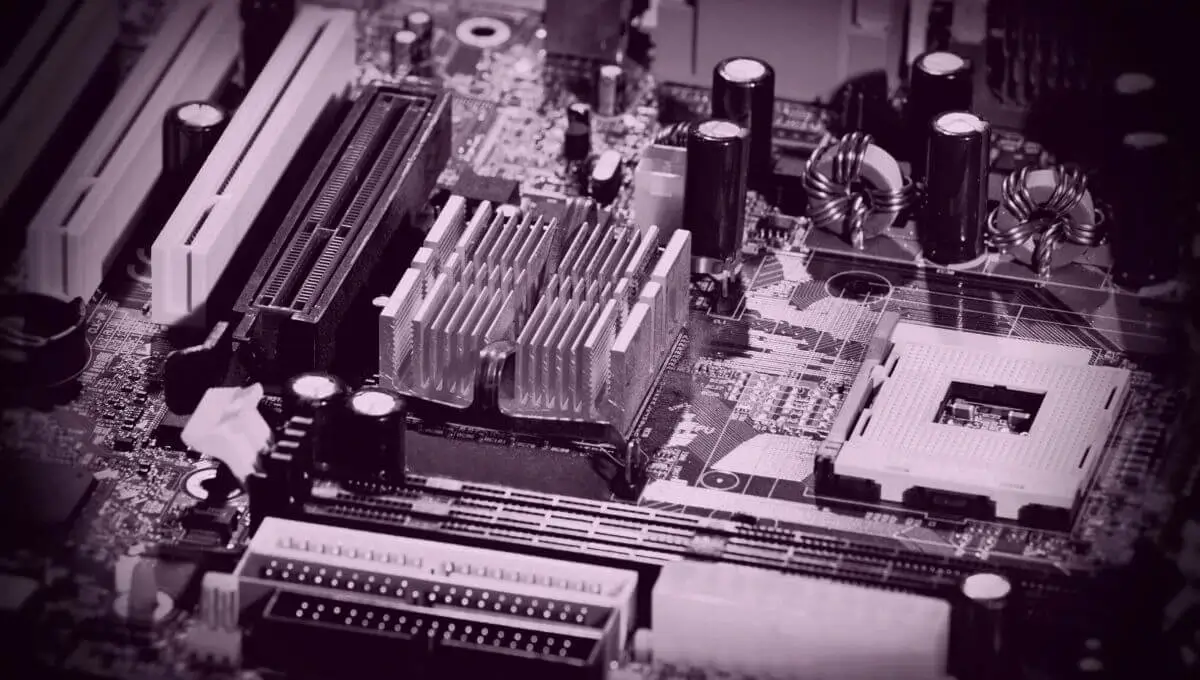You’ve probably decided to build your PC, that’s the reason you’re here. A motherboard is the first component you need to pick before anything else. Choosing the perfect motherboard is a crucial step in the process and I’m here to help make it a little less overwhelming and a lot more fun!
When you’re building your own PC, whether it’s for gaming or casual use, the motherboard is the backbone, it houses the processor, memory, and other components. And we want to make sure it’s not just any backbone, but the strongest one out there, right?
Now, you might be wondering, “Where do I even start?”. Don’t worry, I got you! We’ll take a look at compatibility with other components, budget, features, and more. And trust me, by the end of this, you’ll be a motherboard pro and ready to make a choice that will have your PC running like a dream machine.
So, are you ready to join the motherboard selection adventure? Let’s get started and make it happen!
Brief Introduction of the Motherboard
Well, I’ve covered the whole motherboard topic in another article, so I’m going to give you a brief overview here.
The motherboard (or mainboard) is the most important component of your computer. It’s responsible for connecting all the other components together, and it’s what allows your processor, RAM, and other components to communicate. The motherboard is also responsible for controlling power to all of the other components, and it’s the main component that you have to consider when building your PC.
What to Consider When Buying a Motherboard?
Motherboards contain a ton of different components that are stored in various slots. This means that you’ll need to make sure that the motherboard you choose is compatible with all the components you plan on using.
Shortly, a motherboard must have enough slots for your components, and it must support the processor you plan on using. Furthermore, make sure that your motherboard can deliver enough power to all of your components, and it must have enough ports for connecting peripherals.
After considering the basic compatibility factors, there are several other important considerations when choosing a motherboard:
Chipset
A chipset is the main component that includes a set of microchips, which ensures that all the connected parts are communicating together. Every released CPU comes with a defined chipset in its documentation, meaning that the motherboard must be equipped with the same chipset for everything to work.
In a motherboard, the chipset handles the data flow between the various components on the motherboard, such as the CPU, memory, and peripheral devices.
The chipset is typically divided into two main parts:
- Northbridge
- Southbridge
The northbridge handles the communication between the CPU, memory, and high-speed peripherals such as graphics cards, while the southbridge handles the communication with lower-speed peripherals such as USB and network ports.
Together, the northbridge and southbridge ensure that all the components on the motherboard are able to communicate and work together seamlessly.
Socket
The socket is the physical interface between the CPU and the motherboard, and it ensures that the CPU is securely and properly connected to the motherboard. Just like chipset, both Intel and AMD uses different socket types with new lineup of their CPUs.
Form Factor
The form factor of a motherboard refers to its physical size. When building a computer, it’s important to consider the form factor of the motherboard in relation to the case that will be used. The case you choose will determine the size of the motherboard that can be used in the build. If you haven’t purchased the case yet, it’s important to keep in mind that different form factors have different dimensions and can only fit in cases of a corresponding size.
The most common form factors for motherboards include ATX, Micro-ATX, and Mini-ITX. ATX motherboards are the most common and standard size, while Micro-ATX and Mini-ITX motherboards are smaller in size and can be used in smaller cases.
Here’s the difference between the form factors:
- ATX (Advanced Technology Extended) - This is the most common and standard form factor for motherboards. ATX motherboards are typically 305mm x 244mm in size and have a standard layout for components and connectors.
- Micro-ATX (Micro Advanced Technology Extended) - Micro-ATX motherboards are smaller than ATX motherboards, typically 244mm x 244mm in size. They have a slightly reduced number of expansion slots and connectors compared to ATX motherboards.
- Mini-ITX (Information Technology eXtended) - Mini-ITX motherboards are the smallest form factor, typically 170mm x 170mm in size. They have a very limited number of expansion slots and connectors, making them suitable for compact and small form factor builds.
- Extended ATX (eATX) – It is larger than ATX board, used in high-end workstations and servers. Also this form factor is getting common with gaming builds as it has more expansion slots than ATX.
RAM Compatibility
The motherboard you choose must also be compatible with the type and amount of RAM you plan on using. RAM is an essential component of your computer, and it’s responsible for storing and processing data in real-time.
Memory slots (DIMM) on the motherboard determine the amount of RAM that can be used, and different motherboards may have different numbers of slots. Additionally, different motherboards may support different types of RAM, such as DDR4 or DDR5.
It’s important to ensure that the motherboard you choose can support the amount and type of RAM you plan on using.
Expansion Slots
Expansion slots on the motherboard allow you to add additional components to your computer, such as a graphics card or sound card. These slots are PCIe (Peripheral Component Interconnect Express) slots, and they are available in different lengths and widths to accommodate different components. Here are the most common one’s you need to understand about:
- PCIe x1: This is the smallest and most common type of slot, providing a bandwidth of 250 MB/s. It’s usually used for low-speed peripherals like sound cards or network cards.
- PCIe x4: This slot provides four times the bandwidth of a x1 slot, which is about 1 GB/s. It’s usually used for high-speed storage devices such as NVMe SSDs.
- PCIe x16: This is the largest and fastest type of slot, providing a bandwidth of 4 GB/s. It’s exclusively used for graphics cards and is the standard for modern gaming PCs.
The number and type of expansion slots will vary depending on the motherboard you choose and the form factor you choose. Here’s a general overview:
- ATX: This is the most common form factor and typically has 4 to 7 PCIe slots.
- Micro-ATX: This form factor is smaller than ATX and typically has 2 to 4 PCIe slots.
- Mini-ITX: This is the smallest form factor and typically has 1 or 2 PCIe slots.
Storage Options
Another important consideration when choosing a motherboard is the storage options it provides. Motherboards will typically have multiple SATA ports for connecting hard drives and solid-state drives, and some may also have M.2 slots for additional storage options.
The number of SATA ports and M.2 slots can also vary depending on the motherboard. High-end motherboards can have up to 6 SATA ports and multiple M.2 slots, while budget motherboards may only have 4 SATA ports and 1 M.2 slot.
It’s important to make sure that the motherboard you choose has enough storage options to meet your needs, as well as the correct interface for the storage devices you plan on using.
Connectivity
Connectivity is another important consideration when choosing a motherboard. This includes things like USB ports, Ethernet ports, and audio jacks. Different motherboards may have different numbers of these ports, as well as different versions of USB and Ethernet, so it’s important to make sure that the motherboard you choose has the right connectivity options for your needs.
Budget
Your budget is also an important factor when choosing a motherboard. Motherboards can range in price from very cheap to quite expensive, depending on the features they offer and the brand they belong to.
It’s important to make sure that you get the best value for your money when selecting a motherboard. If you’re planning for overclocking, you may need to invest in a more expensive motherboard, as these typically offer more features for enthusiasts. On the other hand, if you’re on a tight budget, then you should focus on finding an affordable motherboard with all of the features that you need.
Optional Features
Motherboards also come with a variety of optional features, such as built-in Wi-Fi, Bluetooth, or integrated audio. These features are not essential for a functioning computer, but they can be convenient and provide added value.
RGB lighting is also becoming a popular feature on motherboards, and it can be used to customize the look of your build. If this is something that interests you, then you should look for a motherboard that supports RGB lighting.
Conclusion
In conclusion, choosing the right motherboard for your PC is crucial to building a machine that fits your needs and budget. By taking into account the compatibility with other components, budget, desired features, and manufacturer’s brand and warranty, you’ll be able to select a motherboard that will help you build a PC that truly shines.
Remember, it’s not just about finding the best specs and performance - it’s also about finding a motherboard that fits your unique style and personality. So don’t be afraid to have some fun with it! With the right motherboard, you’ll be ready to take on any task and tackle any challenge, whether you’re gaming, video editing, or simply browsing the web. So let’s get building!



